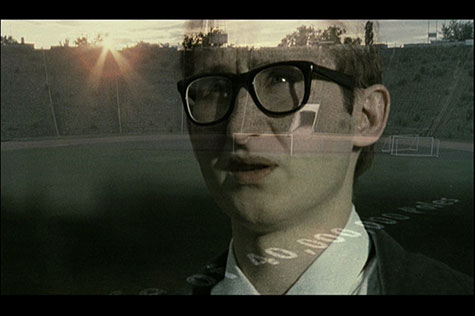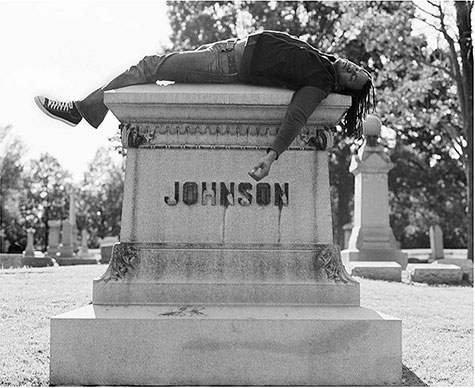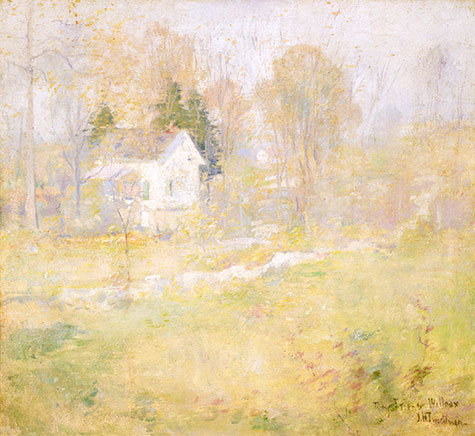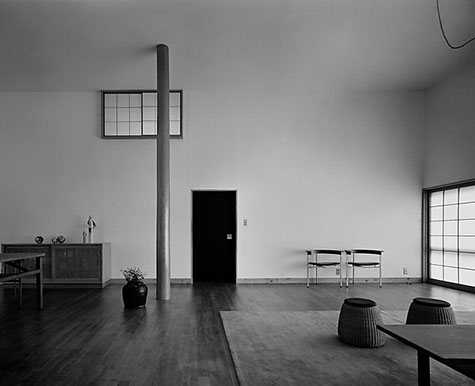
This fall, the Mildred Lane Kemper Art Museum will present Rashid Johnson: Message to Our Folks, the first major solo museum exhibition to survey the career of this Chicago-born, New York-based artist.
Opening Sept. 20, Message to Our Folks is one of four shows featured during the 2013-14 academic year. Also opening Sept. 20 will be American Places: Painting the Landscape in the Nineteenth Century.
Next spring, the museum will present In the Aftermath of Trauma: Contemporary Video Installations, featuring works by Yael Bartana, Phil Collins, Alfredo Jaar, Amar Kanwar and Vandy Rattana. Also in the spring will be On the Thresholds of Space-Making: Shinohara Kazuo and His Legacy, which examines the work of this influential Japanese architect.

Rashid Johnson: Message to Our Folks
Ebsworth Gallery
Organized by the Museum of Contemporary Art Chicago.
Curated in St. Louis by Meredith Malone, associate curator, Kemper Art Museum.
In artworks spanning photography, painting, sculpture and video, Johnson confronts old assumptions about the African American experience while exploring, often playfully, the complexities, contradictions and singular histories that comprise black identity today. Frequently referencing iconic historical, intellectual and cultural figures, Johnson combines the signs and symbols of Afrocentrism, Afrofuturism, Hip-Hop and other movements with a more personal vocabulary of images and materials reflecting his own youth and artistic development.
American Places: Painting the Landscape in the Nineteenth Century
Garen Gallery
Curated by Karen Butler, associate curator, Kemper Art Museum.
Drawn from the Kemper Art Museum and other St. Louis-area collections, American Places explores a range of practices and approaches in 19th-century landscape painting. The exhibition features approximately 30 works by Frederic Edwin Church, Thomas Cole, Childe Hassam, John Henry Twachtman and Charles Ferdinand Wimar, among others. From New England villages to southern bayous, from the Delaware River to the Indian territories, these artists capture the dramatic transformations wrought by social change and modernization, as well as the corresponding transformation of cultural identities.

In the Aftermath of Trauma: Contemporary Video Installations
Ebsworth Gallery
Curated by Sabine Eckmann, William T. Kemper Director and Chief Curator, Kemper Art Museum
Exploring both the experience and lingering effects of traumatic events, In the Aftermath of Trauma showcases the work of five video artists from around the world: Yael Bartana, Phil Collins, Alfredo Jaar, Amar Kanwar and Vandy Rattana.
Working in a semidocumentary format, these artists combine fictional and historical elements to engage a range of traumatic events, from the Holocaust, the Vietnam War and German reunification to the post-9/11 war on terror and the ongoing conflicts between India and Pakistan. Confounding expectations about truth and reality, fact and artifice, history and memory, they investigate the nature of trauma but also seek distance from it, both questioning and challenging conventional notions of representation and closure.
On the Thresholds of Space-Making: Shinohara Kazuo and His Legacy
Garen Gallery
Curated by Seng Kuan, assistant professor of architectural history, Sam Fox School of Design & Visual Arts
Though considered one of Japan’s greatest postwar architects, Shinohara Kazuo (1925-2006) remains somewhat of a cult figure, best known for poetic, purist homes that stand in counterpoint to the technological optimism of contemporaries like the Metabolists.
Curated by Seng Kuan, assistant professor of architecture in Washington University’s Sam Fox School of Design & Visual Arts, On the Thresholds of Space-Making will feature original drawings, sketches and other archival material on loan from the Shinohara Kazuo Collection—much of which has never been publicly displayed before — as well as photographs and models of Shinohara’s houses and a selection of contemporary projects that demonstrate his lasting influence.

Mildred Lane Kemper Art Museum
The Mildred Lane Kemper Art Museum, part of Washington University’s Sam Fox School of Design & Visual Arts, is committed to furthering critical thinking and visual literacy through a vital program of exhibitions, publications and accompanying events. The museum dates back to 1881, making it the oldest art museum west of the Mississippi River. Today it boasts one of the finest university collections in the United States.
The Kemper Art Museum is located on Washington University’s Danforth Campus, near the intersection of Skinker and Forsyth boulevards. Regular hours are 11 a.m. to 5 p.m. daily; 11 a.m. to 8 p.m. first Friday of the month. The museum is closed Tuesdays.
For more information, call (314) 935-4523; visit kemperartmuseum.wustl.edu; or follow the museum on Facebook and Twitter.